Shinshu (now Nagano Prefecture) is said to be the birthplace of soba-kiri. Nagano Prefecture has a large temperature difference between day and night, and the well-drained mountainous fields are suitable for cultivating buckwheat. There are many famous and special production areas for soba, such as Togakushi soba (Kirishita soba) and Kaida soba. It also has the largest number of soba restaurants in Japan. Today, we are going to experience the “top delicious soba of Japan” – Shinshu Soba.
What is Shinshu soba?
Soba is a representative local food of Nagano Prefecture, so much so that Nagano Prefecture is synonymous with Shinshu soba. Shinshu soba is a generic term for buckwheat noodles generally made in Nagano Prefecture. Locals make this by mixing buckwheat flour and wheat flour, adding water, and then kneading, stretching, and cutting.
Many locals believed that Shinshu is the birthplace of “buckwheat†and Nagano Prefecture became famous for the “Shinshu sobaâ€. In general, only noodles that contain more than 40% buckwheat flour can be called Shinshu soba. Today, Nagano prefecture remains synonymous with buckwheat, and ShinshÅ« soba is widely considered some of the best in Japan.
Etymology
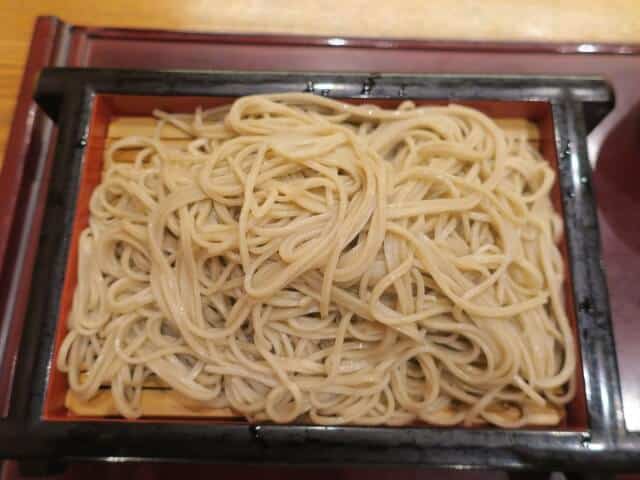
Shinshu Soba (ä¿¡å·žãã°) have its name derived from “Shinano (信濃)†which is the old name of Nagano Prefecture. Locals also call this Shinano soba. (Shinano (信濃) = Shinshu(ä¿¡å·ž).
Shinshu soba History
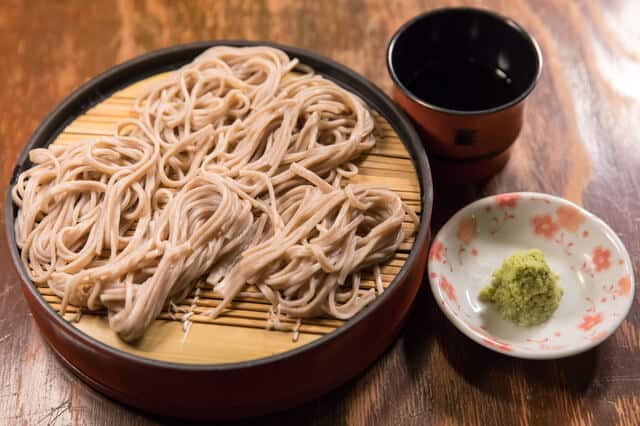
Buckwheat was probably present in Japan throughout the Jomon period, however, whether locals frequently consumed this is debatable. What is definite is that the Japanese developed it out of necessity. Buckwheat, unlike rice, is a fast-growing and hardy grain that thrives on poor, thin, mountainous soil (of which there is a great deal in Japan). It was thus an important backup crop in locations where rice production may be unpredictable at best and unsuccessful at worst.
Speaking of Nagano Prefecture, “Shinshu soba” is a representative local dish. “Soba” has been grown as an agricultural product in the cold climate of the highlands where it is difficult to grow rice and wheat. In the cold highlands around 700m above sea level, where the morning fog hits, the soba noodles that are vulnerable to frost are gently protected by the fog, making delicious soba noodles possible.
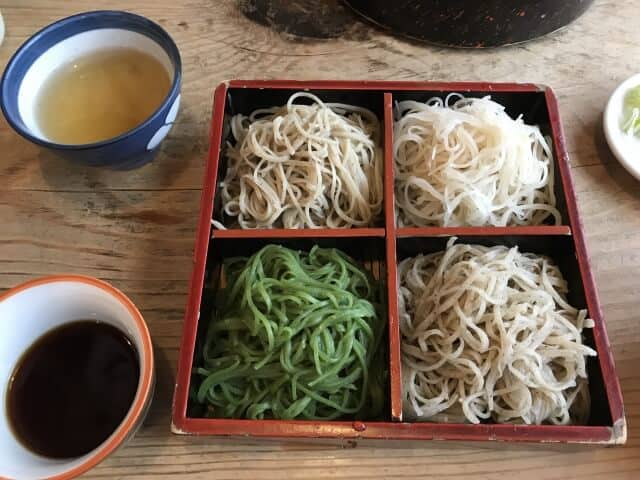
It is also famous as the birthplace of soba-kiri (thin noodle-shaped soba). It was around the beginning of the Edo period that soba-Kiri (soba cut into thin strips) appeared as a treat for special occasions. There are various theories about its origin. In “Kofukigusa” (1645), there is a description that “Soba-kiri is a specialty of Shinano Province”. There are many soba specialties and production areas such as “Togakushi soba” and “Kaida soba”. “Togakushi soba”, also known as “shimoshita soba”, has a good flavor and is made with cold water for a smooth texture. It is a soba-making method handed down since ancient times, using a single stick and a circle.
Shinshu Soba Recipe
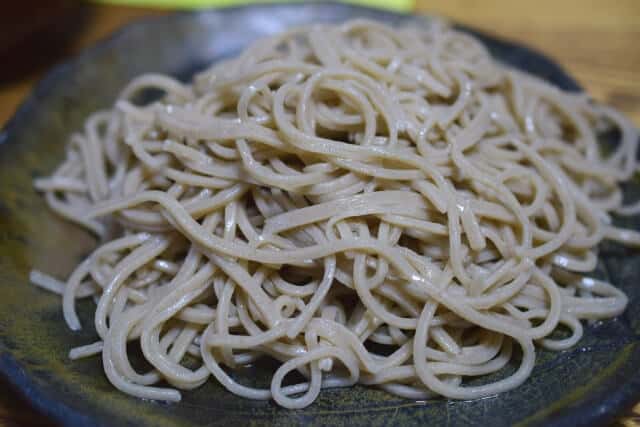
Shinshu Soba Ingredients
| Ingredients of Shinshu Soba for 3-4 people | |
| Buckwheat flour | 400g |
| Flours (ground flour) | 100g |
| Water | 225g |
| [Soba dipping sauce] | 400g |
| [Soba dipping sauce] | 100g |
| [Soba dipping sauce] | 100g |
How to make Shinshu Soba
Sprinkle buckwheat flour and wheat flour and mix well in a kneading bowl. Then, pour over the water and stir quickly so that the water is evenly mixed throughout the powder. As you stir with your hands in the shape of a rake, it becomes flake-like, and the small powder particles gradually come together to form a smooth marble-like shape.
The big one is about the size of a ping pong ball. When you can’t feel the dust all over, put them together and knead the chrysanthemum.
Roll out with a rolling pin and cut them into buckwheat noodles. Boil water in a large pot, divide it into small portions, sprinkle them in, and wait until they float. Rinse quickly with cold water, remove the slime from the surface, and rinse with ice water. Drain the water with a sieve.
Prepare condiments etc. in a well-organized manner so that you can eat them immediately. It tastes best within 2 minutes after boiling.
Why Shinshu soba is so delicious?
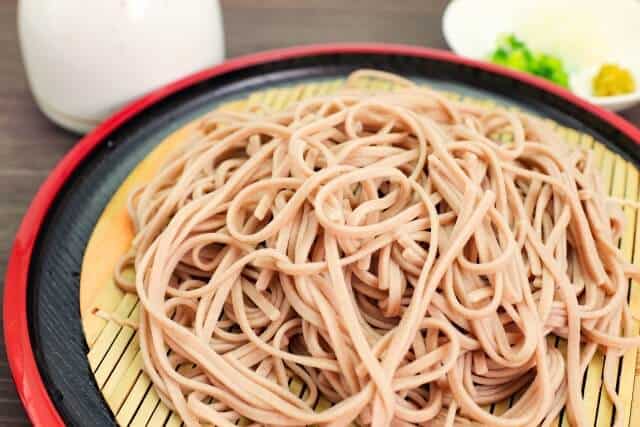
First of all, the taste of buckwheat flour or the Shinshu Soba becomes delicious because, for buckwheat cultivation, the climate of high cold regions is perfect. Because of the large temperature difference between day and night, delicious buckwheat berries grow. It is also possible to grow delicious buckwheat noodles with well-ripened starch. It also has the taste of water. The soba-kiri is mainly consists of buckwheat flour and water. The boiled soba noodles are then tightly squeezed with plenty of cold water. Shinshu soba is a traditional dish made possible by the beautiful climate and traditional techniques of Nagano Prefecture.
Benefits of soba
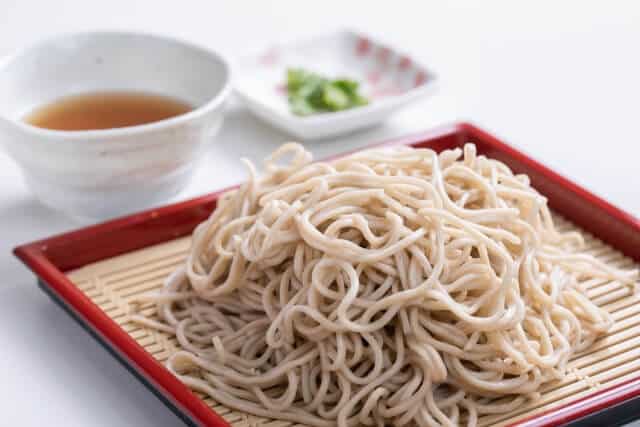
Buckwheat contains many essential amino acids. Lysine, which is important for physical development, and amino acids. It also contains a lot of B vitamins. B1 is an essential nutrient for reducing physical strength, irritability, and loss of appetite, while B2 is an essential nutrient for healthy skin. In addition, buckwheat is the only cereal that contains rutin, a type of vitamin P. Rutin has the effect of preventing the ageing phenomenon of blood vessels. When taken together with vitamin C, it works to prevent blood vessels from becoming fragile.
Various Japanese cuisines that use Shinshu soba

Sobagaki
Sobagaki is a traditional Japanese dish consisting of soba flour and hot water. Locals made this by adding water or hot water to soba flour and mixing well with chopsticks until it gets sticky and becomes a clump.
Traditional Soba Dango
This one is made by adding hot water to buckwheat flour, kneading it, making it into a dumpling, and boiling, steaming, or baking it.
Spicy kimchi soba
It is noodles topped with a spicy sauce composed of kimchi, pepper, paste, red miso, and so on.
Cold soba with natto
It is cold soba with natto on top, usually with takuan, mitsuba. Some locals put grated daikon and sliced okra on noodles, put natto, green onions and nori on top
Healthy Soba with Mushrooms and Daikon Radish
Japanese and you can make this by having very simply basic ingredients like soba noodles, dried bonito flakes, scallion and daikon radish.
Where to buy Shinshu Soba
Okubo West Teahouse (大久ä¿è¥¿ã®èŒ¶å±‹ æˆ¸éš æœ¬åº—)

The store has tatami seats. You can relax in the tatami room. The old pillars and beams of the building are also tasteful and have a nice atmosphere. “Okubo Nishi no Chaya†is a restaurant where you can taste the old-fashioned technique “Togakushi style Shinshu sobaâ€. This is a popular restaurant where you can enjoy Nagano’s local cuisine such as “Shinshu soba”.
Uzuraya (ã†ãšã‚‰å®¶)

“Uzuraya†is a very famous Togakushi soba restaurant. The buckwheat flour is carefully selected from specific local producers, milled in stone during the coldest winter months, and frozen. They are particular about defrosting the buckwheat flour and making it into soba every time they use it. This is a restaurant where you can taste the quality of soba ingredients and the high level of skill of the craftsmen.
Iizuna Honten (手打ãã°å‡¦ 飯綱 本店)
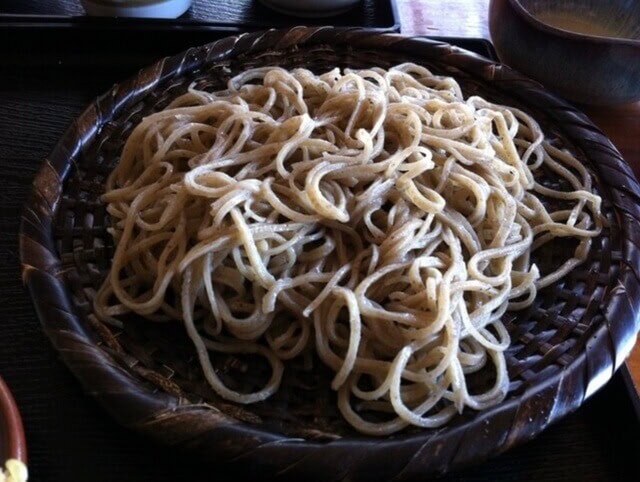
“Iizuna Honten†is a shop that uses “Kirishita soba†grown in the mountains of “Iizunayama†in the northern part of Nagano prefecture as an ingredient. At the restaurant, they milled the buckwheat with stone powder and kneaded with clean water so the oba noodles go down smoothly. It is also a famous place for autumn leaves, and in the summer, you can enjoy a trip to enjoy camping and boating at popular spots and eat soba.
Takeaway
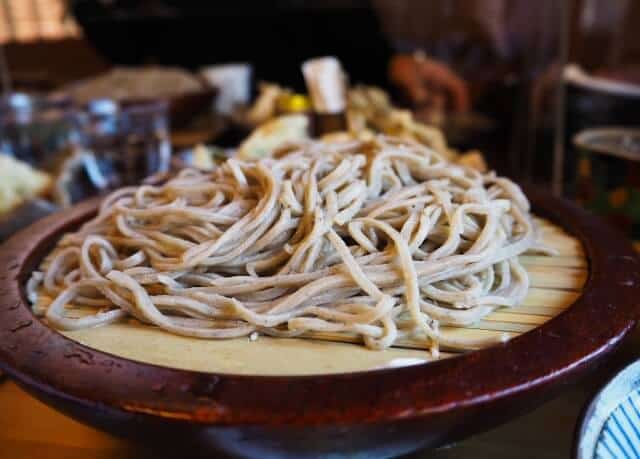
While some foreigners who live in Japan become obsessed with ramen, and yet more ramen, some also love soba. It’s not a crowd pleaser like ramen, curry, or other Japanese favourites, perhaps due to its perception as “health food†in the west. While traditionally prepared soba noodles are indeed very healthy (high in protein and fiber, nearly devoid of animal products, and almost always accompanied by some sort of vegetable). By reading this article you will be drawn to the painstaking process and ritual that surrounds their creation, the minimalist presentation of the soba, their hand-hewn texture and earthy flavour, and of course the sheer fun of slurping them up.
If you are interested in other types of soba, you can click here for more information.
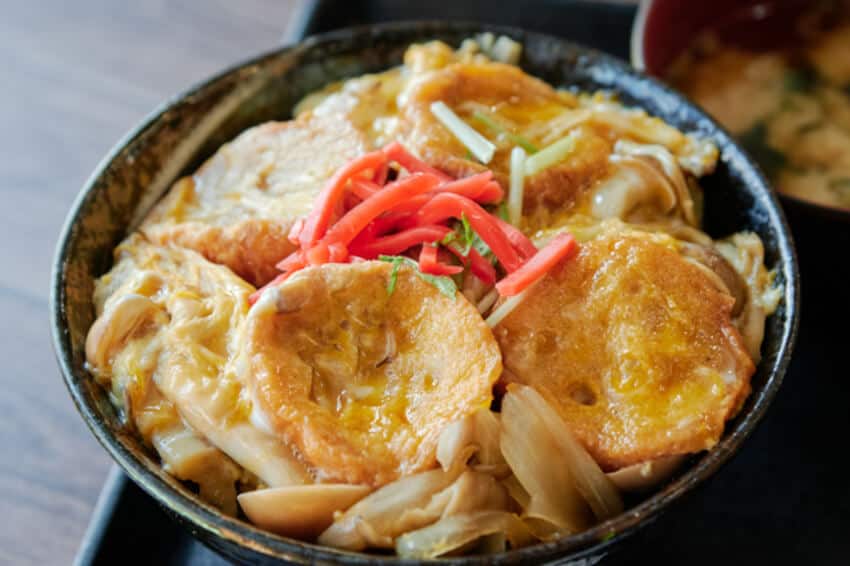
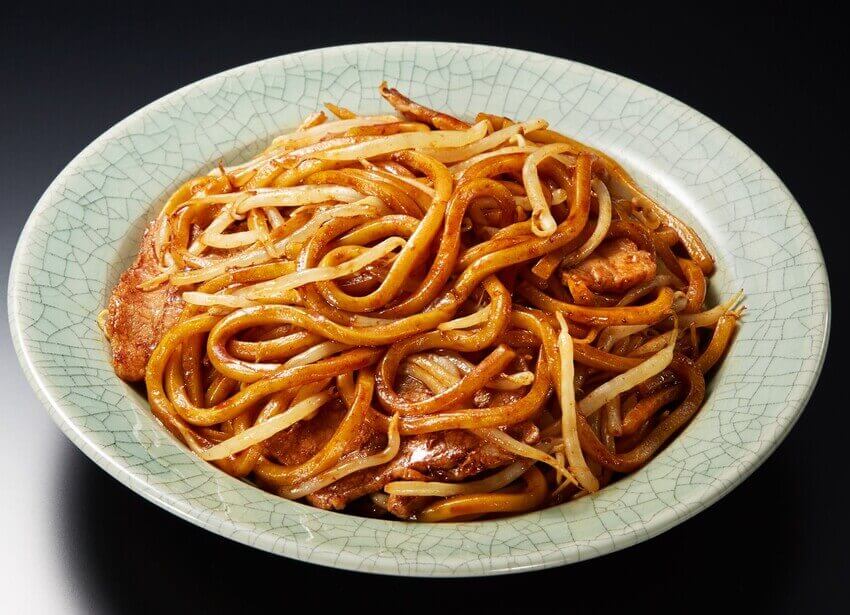




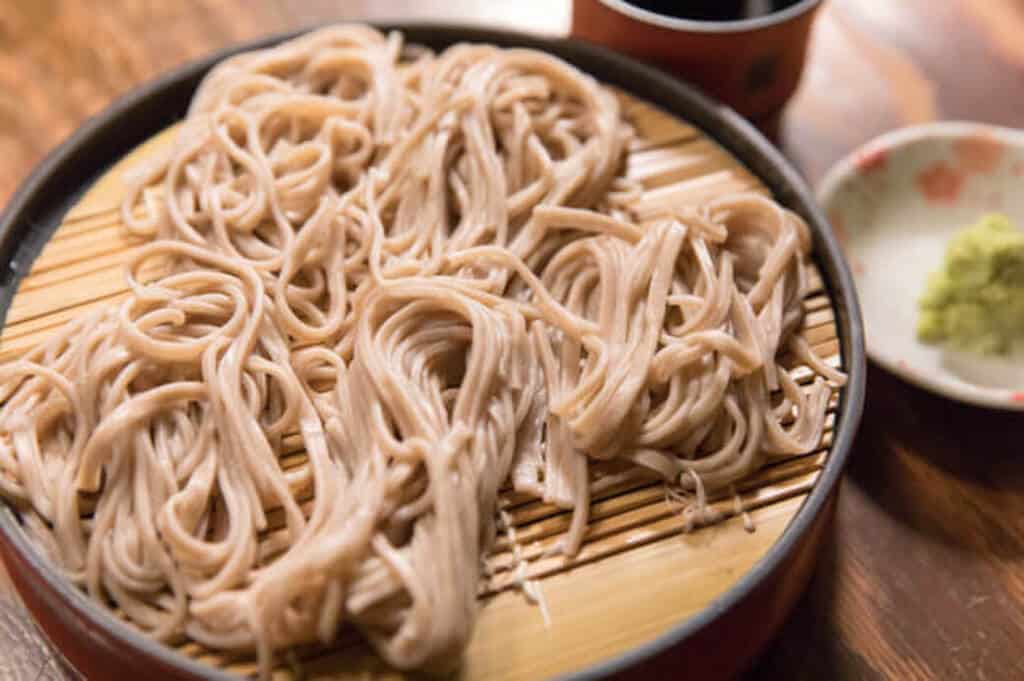
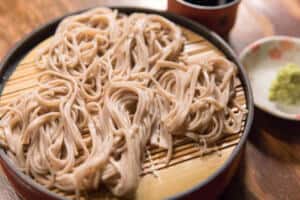
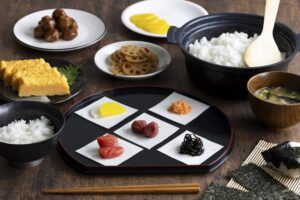
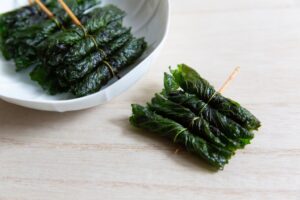
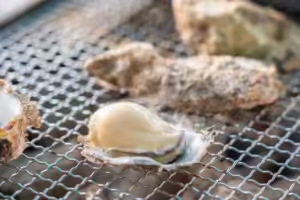
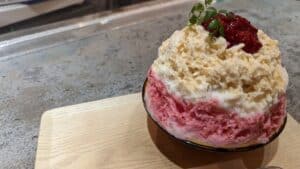
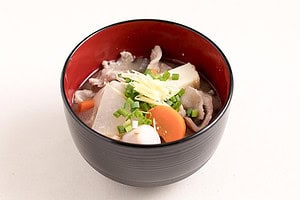
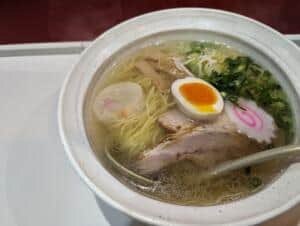
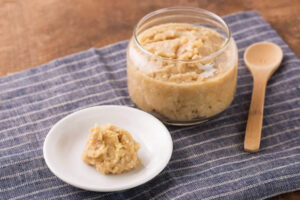
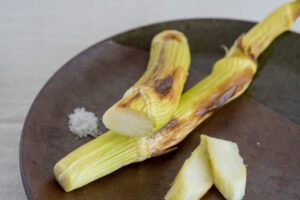
Comments